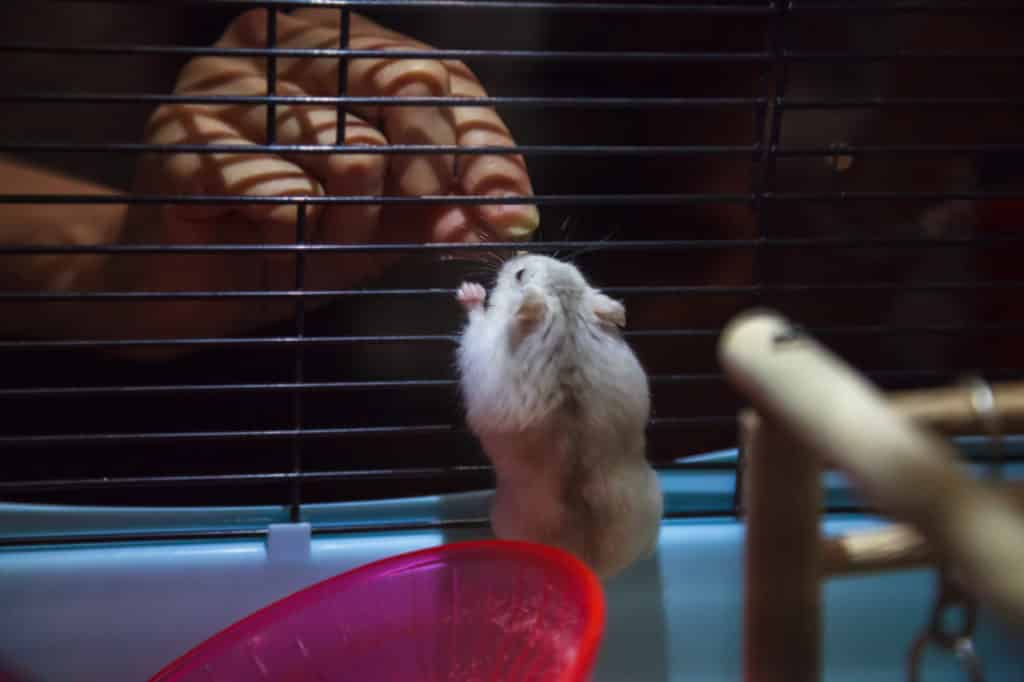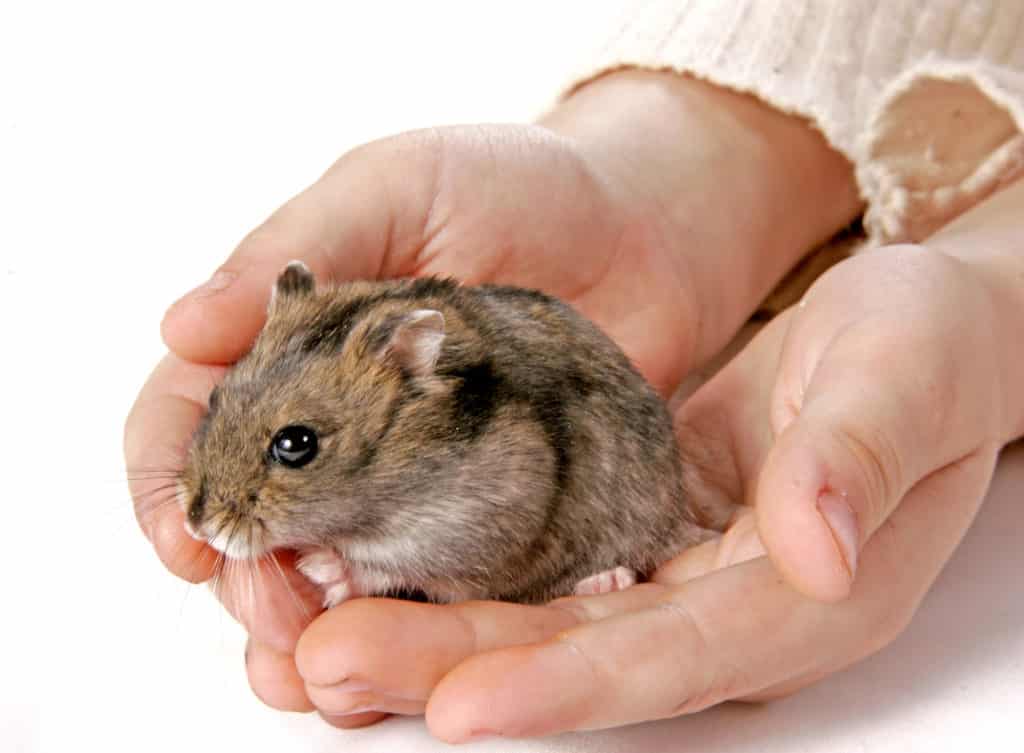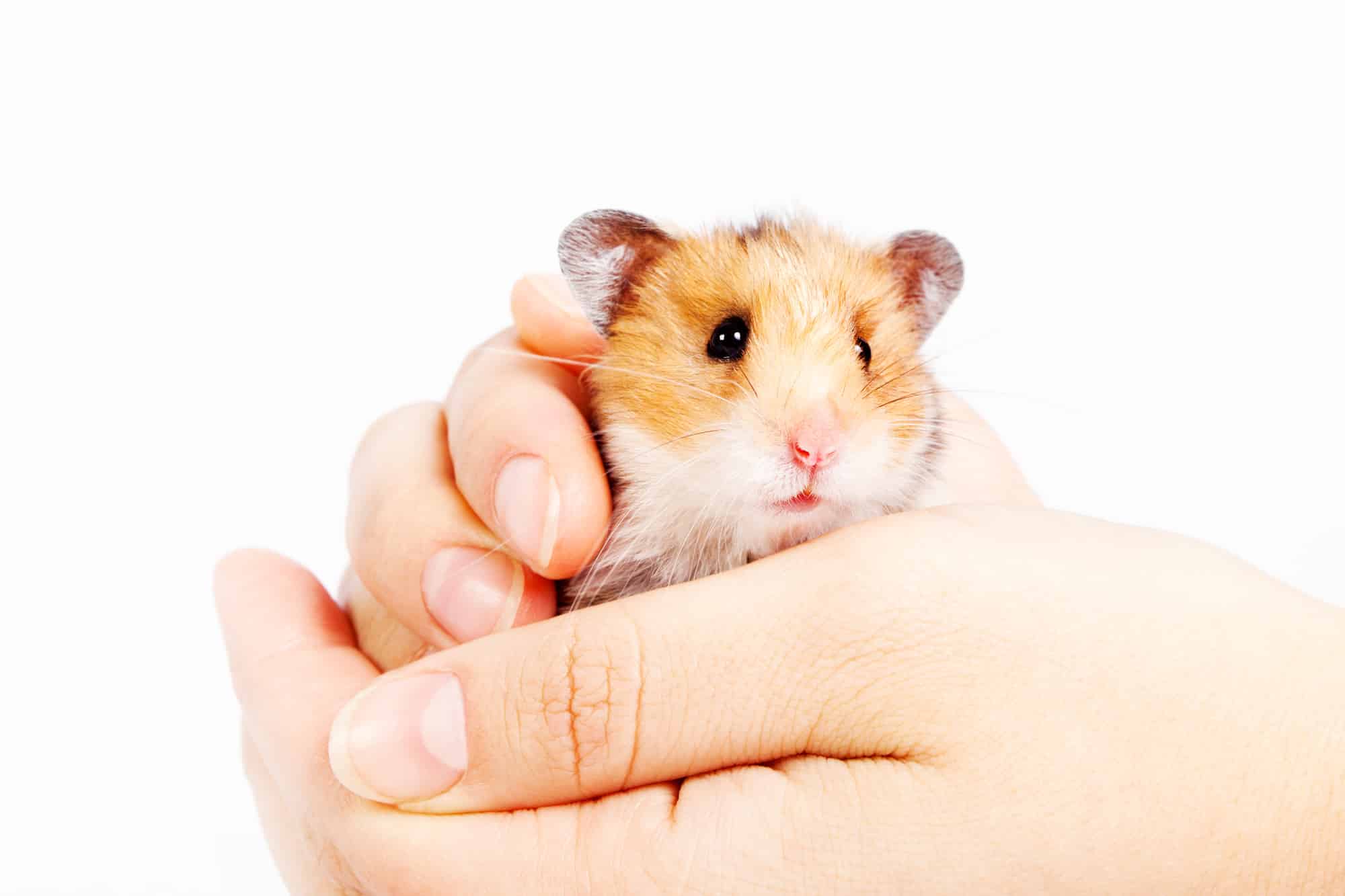Every person who buys a pet does so with the hope of developing a deep bond with another animal. But creating a deep bond becomes difficult without taming that animal in the first place.
But before you understand why taming your hamster is important, take a step back, and first, think about yourself. Will you open up to any random person walking on the road or let a stranger hug you without reason (Assuming you are not the person standing on a road with a ‘Free hugs’ sign :D)? A normal person who isn’t an extreme extrovert wouldn’t do that. But would you hug a person you’ve known for a long time (a cousin, a friend whom you have known since kindergarten, or your partner) if you see them on a random road? Hell, yeah.
Well, you know what? Hamsters aren’t that different from humans. So, to let them bond with you, you should first tame them. Once you build that trust, your hamster will long to see you, to be held by you, and to play with you. But if you don’t know how to do it, you don’t have to worry. This blog post will teach you how to tame your hamster within a few weeks. So, continue reading.
5 Steps To Tame Your Hamster
Step 0 – Prepare the cage
Most people think that you start taming your hamster after bringing him home. But in reality, the taming process begins even before you bring your hamster home.
Let’s consider the following situation. You have been living happily in a city. Then, suddenly, your parents decide to move to another town. So, you say goodbye to your friends, pack your stuff and come to the new city. Now, you have to spend months, if not years, getting close to your classmates and becoming friends with them.
A hamster goes through a similar situation when you buy or adopt him. Until the day before, he lived in a pet store or pet shelter. Everything around him was familiar to him. Suddenly, he has forced to come to a new place, where everything is different. Unlike you, his parents are not even near him to help him out. So, obviously, he will be scared of his new home and the new person (I am talking about you, of course ;P).
If you have a small cage with no hamster toys, your hamster will get bored, depressed, and scared quickly. On the other hand, if you have a sufficiently big cage with enough toys to keep him distracted, he will get used to the new surroundings quickly. So, having a good-sized cage with enough toys (hamster wheel, etc.) to play with will help make your hamster comfortable in his new home.
If you keep a thick layer of bedding initially, your hamster will burrow and hide. This will make it difficult for you to tame your hamster. So, initially, keep the bedding minimum (1 to 2 cm thick). Also, rub the bedding with your hands so that your scent sticks to the bedding. This helps your hamster get used to your smell (Source: Hamster society Singapore).
Loud noises can scare a hamster easily, mainly when their surroundings are also new. So, once you have bought the cage and filled it with hamster toys, keep it in a place that isn’t loud. Adjust the room temperature so that it is between 18°C and 24°C.
Step 1 – Give enough time and space
Okay, you have prepared the cage and placed it in the right place. You have bought or adopted a hamster and brought him home. Now what?
As explained in the previous step, your hamster has suddenly gotten into a new environment. So, the best thing you can do during this time is to give him enough time. Give him enough time (a few days) to get used to his new home. But talk to him softly during this time.
Wait till he gets relaxed and calm. If he is relaxed to be around you, he will emerge out of his nest on his own. He will eat, drink, and play when you are nearby. Once this happens, move on to the next step.

Tip: Every day, you should talk with your hamster as often as you can (Of course, only when he is active). This will go a long way in building trust with your hamster.
Step 2 – Earn your hamster’s trust with treats
Once your hamster has gotten used to you and the new surroundings, it is time to build trust. It takes patience to build trust, but the following process can help:
- Once your hamster gets curious about you (If your hamster is curious about you, he will come to the edge of the cage and start smelling or looking at you), start keeping treats near the bars of the cage. Wait till your hamster comes to the bars of the cage to eat the treats. Repeat this for some time.
- Once your hamster gets accustomed to eating treats near the bars of the cage, try offering treats through the cage bars. Once your hamster gets comfortable enough to take food from your fingers, move on to the next part of this process.
- Clean your hands properly so that your hand doesn’t smell of the food you ate earlier. Now keep the treats in your hand and place your hand inside the cage. Even though your hamster will, at first, be scared, he will eventually climb on your hand to eat the treats. Now you have to keep your hands as still as possible because sudden movements can scare your hamster. If you repeat this process often enough, your hamster will learn your smell, and you will become a familiar person to him. You can change the treats every time to find out what he likes and what he doesn’t like. If you offer a food item and he hates it, don’t offer it again. If you repeatedly give him the food item he hates, it will push you back in the process of building trust.
- The next step is to try to gently pat and lightly stroke your hamster with your finger or a brush when he is busy eating the treats from your hand.

Once your hamster starts trusting you and gets comfortable in eating from your hand, move on to the next step.
Step 3 – Hold your hamster
When your hamster is eating the treat from your hand, place your other hand nearby. Then encourage him to move from one hand to another.
Once your hamster is comfortable moving from one hand to another, you can slowly scoop him with both hands. Your hamster will most probably get scared and jump out of your hand. But repeat this step for several days until your hamster doesn’t jump out of your hand. Make sure to hold your hamster carefully near the ground so that he doesn’t fall down and hurt himself.
After a few days of doing this, your hamster will climb into your hand even without offering a treat. He might even start to walk into your hands to explore you.
Tip: You should also hold your hamster for a few minutes every day. This is important in improving the trust you already have with your hamster.
Step 4 – Pick your hamster up
Once your hamster is comfortable being held, you should start to pick him up. Once you have scooped him up in your hands, slowly lift both your hands higher. Then place them back down in the cage. This will help your hamster realize that they are in no danger when they are in your hands.

Repeat this process regularly by slightly increasing the duration every time. After a few days, your hamster will become comfortable sitting in your hand and getting cuddled by you.
At this point, you can even start training your hamster to learn simple tricks by offering his favorite treats.
Don’ts
- If your hamster squeaks or backs away when you try to hold him, it means he is agitated. If that happens, put your hamster back into the cage. Repeat this step again with treats in your hand to gain the trust of your hamster.
- Never try to pick your hamster up by force. It will only make taming him more difficult.
- Hamsters have terrible eyesight. So, never approach your hamster from the back. Don’t approach him from the front too quickly, either. He won’t be able to see you. Hence, he will get scared and the taming process will become difficult.
- Never disturb your hamster when he is sleeping. Hamsters can get startled and get defensive quickly. So, don’t try to pick up a sleeping hamster.
Q & A
How long does it take to tame my hamster?
This is a difficult question to answer. Each hamster has his own personality. Some take a few weeks, whereas others take months to be tamed. In general, however, Syrian hamsters are easier to tame because they are more friendly due to their big size. Dwarf hamsters, like Roborovski, on the contrary, are very small and timid. Hence, it is difficult or even impossible to tame them (Source: Hamsterguru).
Why does my hamster bite me?
If your pet hamster bites you, it means that he is stressed, scared, or anxious. If this happens, you have to go back to the previous step in the taming process (If you are already in step 2 or higher) and repeat it for a longer time than the last time.
But if your hamster keeps biting you regardless of whatever you do, it might be impossible to tame him.
Why is my hamster still scared of me?
If your hamster is still scared of you after you perform the above steps, you can try spending more time building trust with him. As mentioned before, some hamsters, like Roborovski hamsters, maybe impossible to tame. If you have any doubts, you can take your hamster to a veterinary doctor. He can help you find out if your hamster is just impossible to tame, or if he is sick and needs treatment.



